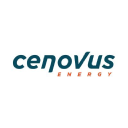/ factorpad.com / stocks / f68tzc.html
An ad-free and cookie-free website.
Our quantitative data points are meant to provide a high-level understanding of factors in equity risk models for Cenovus Energy Inc. Portfolio managers use these models to forecast risk, optimize portfolios and review performance.
We show how CVE stock compares to 2,000+ US-based stocks, and to peers in the Mining, Quarrying, and Oil and Gas Extraction sector and Crude Petroleum and Natural Gas Extraction industry.
Please do not consider this data as investment advice. Data is downloaded from sources we deem reliable, but errors may occur.
 Cenovus Energy Inc. is a Canadian integrated oil and natural gas company. It is committed to maximizing value by sustainably developing its assets in a safe, innovative and cost-efficient manner, integrating environmental, social and governance considerations into its business plans. Operations include oil sands projects in northern Alberta, which use specialized methods to drill and pump the oil to the surface using a technique called steam-assisted gravity drainage (SAGD). The company also has conventional crude oil, natural gas and natural gas liquids assets in Alberta and British Columbia as well as 50% ownership in two U.S. refineries. Cenovus shares trade under the symbol CVE and are listed on the Toronto and New York stock exchanges.
Cenovus Energy Inc. is a Canadian integrated oil and natural gas company. It is committed to maximizing value by sustainably developing its assets in a safe, innovative and cost-efficient manner, integrating environmental, social and governance considerations into its business plans. Operations include oil sands projects in northern Alberta, which use specialized methods to drill and pump the oil to the surface using a technique called steam-assisted gravity drainage (SAGD). The company also has conventional crude oil, natural gas and natural gas liquids assets in Alberta and British Columbia as well as 50% ownership in two U.S. refineries. Cenovus shares trade under the symbol CVE and are listed on the Toronto and New York stock exchanges.
Many of the following risk metrics are standardized and transformed into quantitative factors in institutional-level risk models.
Rankings below represent percentiles from 1 to 100, with 1 being the lowest rating of risk.
Stocks with higher beta exhibit higher sensitivity to the ups and downs in the market. (↑↑)
Stocks with higher market capitalization often have lower risk. (↑↓)
Higher average daily dollar volume over the past 30 days implies lower liquidity risk. (↑↓)
Higher price momentum stocks, aka recent winners, equate to lower risk for many investors. (↑↓)
Style risk factors often include measures of profitability and payout levels.
Companies with higher earnings generally provide lower risk. (↑↓)
Companies with higher dividend yields, if sustaintable, are perceived to have lower risk. (↑↓)
/ factorpad.com / stocks / f68tzc.html
A newly-updated free resource. Connect and refer a friend today.